-
The $5 Banknote
- Date of First Issue
- 7 July 1992
- Date of Issue
- 24 April 1995 (recoloured)
- Size
- 65mm by 130mm
- Designer
- Bruce Stewart
-
Eucalyptus leaves
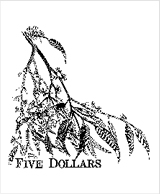
The eucalyptus leaves look like they come from the Scribbly Gum tree.
-
Portrait of Her Majesty Queen Elizabeth II
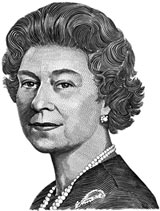
The Queen's portrait is on the Australian $5 banknote.
-
Microprinting

Microprinting is writing that is so small that you need a magnifying glass to read it. Look for microprinting that says ‘FIVE DOLLARS’ above the eucalyptus leaves.
-
Background print (offset)

These patterns made of fine lines are on most parts of the banknote.
-
Shadow image

When you hold a real banknote up to the light, if you try hard you can see the kangaroo and emu on the Australian Coat of Arms.
-
Clear window – vignette of gum flower

Real banknotes have a see-through window. On the $5 banknote there is a gum flower in the window.
-
See-through registration device

When you hold a real banknote up to the light you can see a seven-pointed star inside a circle.
-
Landscape plan for New Parliament House

This is a drawing of the gardens outside Parliament House in Canberra.
-
Parliament House
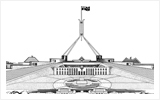
This is a drawing of Parliament House. The Old Parliament House is at the bottom.
-
Geometric patterns

These line patterns look like parts of Parliament House in Canberra.
-
Fluorescent ink properties

When you use a special light some parts of the banknote glow.
-
Fluorescent ink properties

When you use a special light some parts of the banknote glow.
-
Intaglio print

Some parts of the banknote have dark printing that feels rougher than other parts. The portraits and big numbers feel like this.
-
The $10 Banknote
- Date of First Issue
- 1 November 1993
- Size
- 65mm by 137mm
- Designer
- Max Robinson
-
Horseman
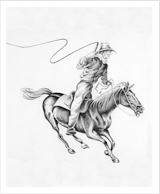
This picture shows the horseman from the poem called The Man From Snowy River.
-
Portrait of AB ‘Banjo’ Paterson
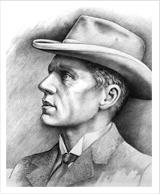
This is a portrait of AB ‘Banjo’ Paterson. He is famous for his poems.
-
Running horses (brumbies)
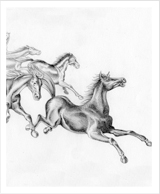
These running horses are called brumbies. The poem called The Man from Snowy River is about a horseman who rides to catch brumbies.
-
Waltzing Matilda logo

This writing says Waltzing Matilda, the name of the famous Australian poem and song by Banjo Paterson.
-
Microprinting

Microprinting is writing that is so small that you need a magnifying glass to read it. Look for microprinting next to the hat and face of AB ‘Banjo’ Patterson. On the $10 banknote you can see some of the words from the poem called The Man From Snowy River.
-
Clear window – vignette of a windmill

Real banknotes have a see-through window. On the $10 banknote there is a windmill and waves in the window.
-
Shadow Image

When you hold a real banknote up to the light, if you try hard you can see the kangaroo and emu on the Australian Coat of Arms.
-
Woman of the outback and outback scene
In this picture you can see a woman from the outback and buildings you would find there.
-
Bullock team carrying wool
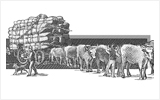
This is a picture of a team of bullocks. They are joined together to pull a cart loaded with wool.
-
Dobell portrait of Dame Mary Gilmore

This is a portrait of Dame Mary Gilmore by the painter Sir William Dobell. You can see this painting at the Art Gallery of NSW.
-
Portrait of Dame Mary Gilmore

This is a portrait of Dame Mary Gilmore when she was a young woman. She is famous for her poems.
-
Background print (offset)

These patterns made of fine lines are on most parts of the banknote.
-
See-through registration device

When you hold a real banknote up to the light you can see a seven-pointed star inside a circle.
-
Fluorescent ink properties

When you use a special light some parts of the banknote glow.
-
Intaglio print

Some parts of the banknote have dark printing that feels rougher than other parts. The portraits and big numbers feel like this.
-
Fluorescent ink properties

When you use a special light some parts of the banknote glow.
-
The $20 Banknote
- Date of First Issue
- 31 October 1994
- Size
- 65mm by 144mm
- Designer
- Garry Emery
-
Schooner ‘Mercury’

This is a drawing of a sailing boat called Mercury. At one time it was owned by Mary Reibey.
-
Portrait of Mary Reibey

This is a portrait of Mary Reibey. She was one of the first women in Australia to have a business.
-
Building

This building was owned by Mary Reibey. It had shops and homes inside.
-
Microprinting

Microprinting is writing that is so small that you need a magnifying glass to read it. Look for microprinting that says ‘TWENTY DOLLARS’ near the top of Mary Reibey's head.
-
Clear window – vignette of a compass
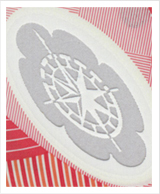
Real banknotes have a see-through window. On the $20 banknote there is a compass in the window.
-
Air ambulance Victory

This is a drawing of a plane called Victory. It was used to get help to people who had accidents or were sick in the outback.
-
Pedal generator

This is a picture of a machine that was used to make power so that people could to talk to each other across a long distance. You pedalled it like a bicycle.
-
Portrait of Reverend John Flynn

This is a portrait of Reverend John Flynn. He started the Royal Flying Doctor Service.
-
Camel and rider (Flynn boundary rider)

This is a drawing of a camel that Reverend John Flynn bought.
-
Background print (offset)

These patterns made of fine lines are on most parts of the banknote.
-
See-through registration device

When you hold a real banknote up to the light you can see a seven-pointed star inside a circle.
-
Fluorescent ink properties
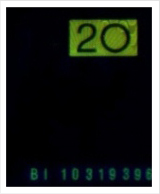
When you use a special light some parts of the banknote glow.
-
Shadow Image

When you hold a real banknote up to the light, if you try hard you can see the kangaroo and emu on the Australian Coat of Arms.
-
Intaglio print

Some parts of the banknote have dark printing that feels rougher than other parts. The portraits and big numbers feel like this.
-
Fluorescent ink properties

When you use a special light some parts of the banknote glow.
-
The $50 Banknote
- Date of First Issue
- 4 October 1995
- Size
- 65mm by 151mm
- Designer
- Brian Sadgrove
-
Mission church at Point McLeay
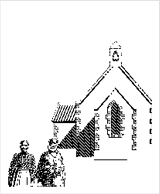
This is a picture of a church from the town where David Unaipon's people live.
-
Portrait of David Unaipon

This is a portrait of David Unaipon. He was an Aboriginal author and inventor.
-
Manuscript

These words were written by David Unaipon at the beginning of his story called Legendary Tales of the Australian Aborigines.
-
Diagrams of Unaipon's patent application

This is a drawing of the tool David Unaipon invented for shearing sheep.
-
Microprinting

Microprinting is writing that is so small that you need a magnifying glass to read it. Look for microprinting that says ‘FIFTY DOLLARS’ near the top of David Unaipon's hair.
-
See-through registration device

When you hold a real banknote up to the light you can see a seven-pointed star inside a circle.
-
Clear window – vignette of the Southern Cross
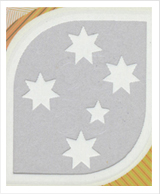
Real banknotes have a see-through window. On the $50 banknote the five stars of the Southern Cross are in the window.
-
Shadow Image
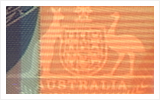
When you hold a real banknote up to the light, if you try hard you can see the kangaroo and emu on the Australian Coat of Arms.
-
WA Parliament House

This is a drawing of how the front of the West Australian Parliament House building looked in the 1920s.
-
Portrait of Edith Cowan
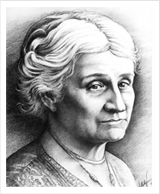
This is a portrait of Edith Cowan. She was the first woman member of parliament in Australia.
-
Foster mother and state children

This is a picture of a foster mother and children who Edith Cowan helped.
-
Cowan at lectern

This is a drawing of Edith Cowan giving a speech about women and children.
-
Fluorescent ink properties

When you use a special light some parts of the banknote glow.
-
Intaglio print

Some parts of the banknote have dark printing that feels rougher than other parts. The portraits and big numbers feel like this.
-
Background print (offset)
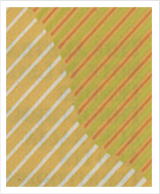
These patterns made of fine lines are on most parts of the banknote.
-
Fluorescent ink properties

When you use a special light some parts of the banknote glow.
-
The $100 Banknote
- Date of First Issue
- 15 May 1996
- Size
- 65mm by 158mm
- Designer
- Bruce Stewart
-
Her Majesty's Theatre

This is a picture of the inside of a very old theatre in Sydney. Dame Nellie Melba sang there many years ago.
-
‘Melba’ signature
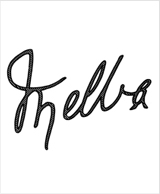
This is a picture of how Dame Nellie Melba wrote her name - Melba.
-
Melba Australian Concert Tour program (1902)
This is a drawing of Dame Nellie Melba's initials. Look for the N and M.
-
Portrait of Dame Nellie Melba

This is a portrait of Dame Nellie Melba. She was a very famous Australian singer.
-
Microprinting

Microprinting is writing that is so small that you need a magnifying glass to read it. Look for microprinting that says ‘ONE HUNDRED DOLLARS’ at the top of the picture of the theatre.
-
Clear window – vignette of a lyrebird

Real banknotes have a see-through window. On the $100 banknote a lyrebird is in the window.
-
Shadow Image
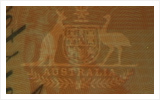
When you hold a real banknote up to the light, if you try hard you can see the kangaroo and emu on the Australian Coat of Arms.
-
Rising Sun badge
Australian soldiers wear a badge with the sun on it. A picture of this badge is on the $100 banknote.
-
Cavalry

This is a drawing of Australian soldiers on horses many years ago.
-
Portrait of Sir John Monash

This is a portrait of Sir John Monash. He was a great Australian soldier.
-
Gunners and 18-pounder field gun

This is a picture of Australian soldiers in battle many years ago.
-
Fluorescent ink properties

When you use a special light some parts of the banknote glow.
-
Intaglio print

Some parts of the banknote have dark printing that feels rougher than other parts. The portraits and big numbers feel like this.
-
Fluorescent ink properties

When you use a special light some parts of the banknote glow.
-
See-through registration device

When you hold a real banknote up to the light you can see a seven-pointed star inside a circle.
-
Background print (offset)

These patterns made of fine lines are on most parts of the banknote.
